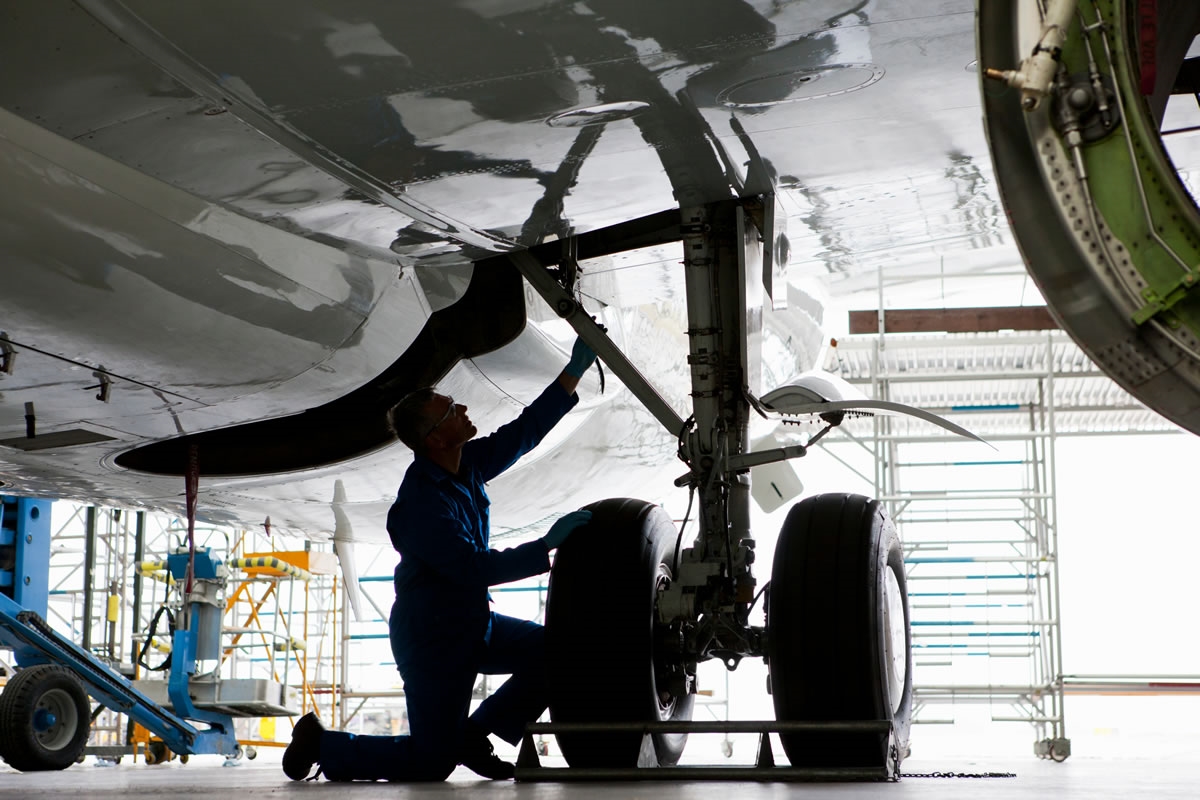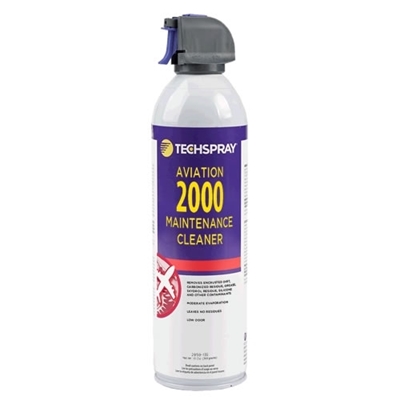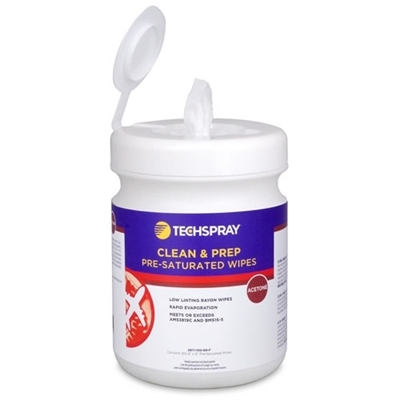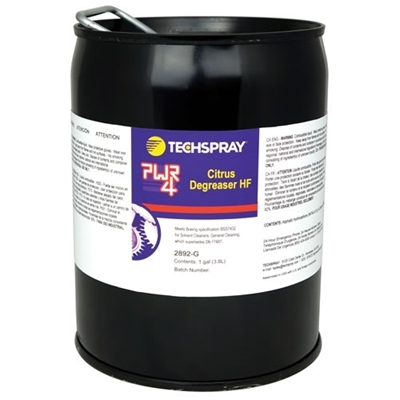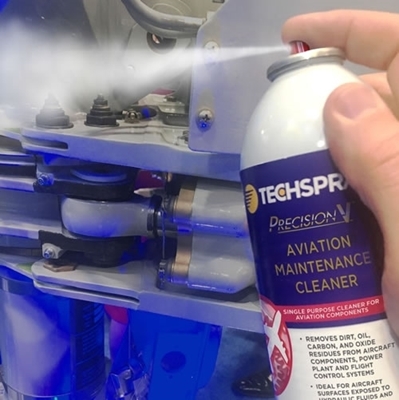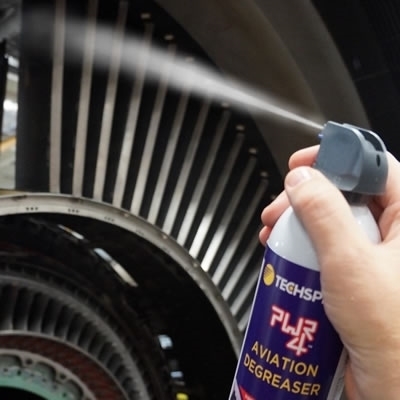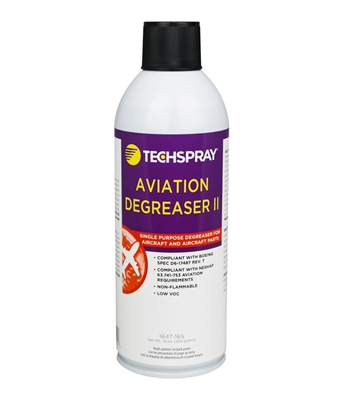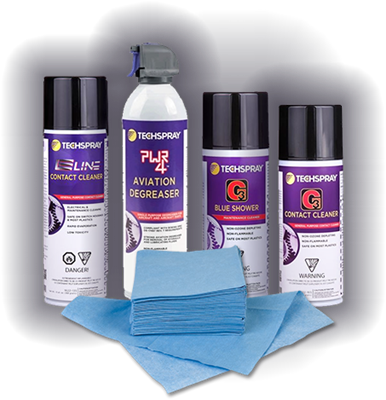Keeping aircraft clean is an essential part of the aircraft maintenance process. The FAA states that "from an AMT's viewpoint, it should be considered a regular part of aircraft maintenance." Maintaining the cleanliness of your aircraft goes far beyond aesthetic appeal. Yes, a clean aircraft does inspire greater confidence in the quality of the aircraft, but more so, it is the top defense against the greatest threat to your airframe: corrosion.
A thorough and complete cleaning regimen is a low-impact way to control corrosion on the aircraft. Let's look at what the FAA and the U.S. Air Force have to say about it.
What Causes Corrosion on Landing Gear Assemblies?
The first question that we need to tackle is identifying the enemy. Public enemy #1 for every airframe assembly is corrosion, period. It is arguably the enemy of the entire aircraft. An engine, accessory drive system, or environment system can be swapped out as a unit, but when corrosion develops, it is cancerous to the entire airframe.
In a very simple nutshell, there are four factors that must be present for corrosion to occur:
- Anode: a metal that tends to rust, most commonly steel in aircraft.
- Cathode: the cathode is a dissimilar metal that is less likely to corrode (aluminum or a protected part of a similar metal).
- Electrolyte: a conductive liquid required to connect the anode and cathode to carry ions between the two metals. Water is the most common and obvious electrolyte.
- Electrical contact: an electrical contact exists between the anode and cathode for corrosion.
The removal of any one of these factors will stop corrosion.
What Environmental Processes Influence Corrosion on Landing Gear?
The above example is an overly simple explanation of the complex basis for corrosion. Aircraft are complex machines that operate in harsh environments, and several factors heavily influence the development and rate of corrosion. For instance, seawater accelerates the chemical reaction 1,000 times over tap or distilled water. The Air Force provides a standard wash table, and their aircraft near saltwater shores are washed six times as often as inland locations.
Stresses Common to the Landing Gear
The landing gear is an aircraft area prone to high stress and corrosion regardless of size or type. Two critical indicators of corrosive development are temperature and mechanical stress, which are both environmental factors that constantly affect the landing gear assembly.
The brakes on a commercial jet get extremely hot. For example, the operating temperature thresholds for the Boeing 767-200/300 are about 700°F for steel brakes and 800°F with carbon brakes.
Landing gear assemblies are also home to the most extraordinary mechanical stresses on the entire airframe. It carries ramp weights and takeoff weights of hundreds of thousands (and sometimes exceeding one million) of pounds and absorbs the landing impact of the maximum landing weight upon landing.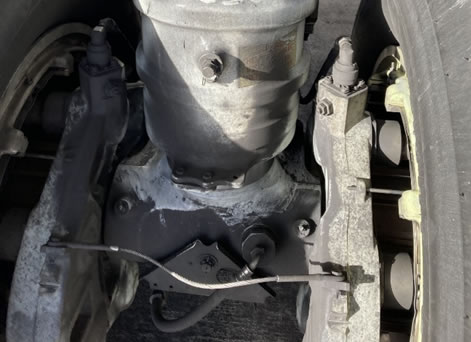
A very dirty B737 main landing gear
The FAA's Bible of Aircraft Maintenance, the Advisory Circular 43.4B, aptly points out that the landing gear receives more punishment than any other area of the jet. Not only is it home to mechanical stresses, but it is constantly exposed to mud, salt and sand (winter operations), gravel, and any foreign object debris (FOD) on the active pavements.
Cleaning the Landing Gear
Brakes create enormous amounts of dust and grime that coat everything around the landing gears, and the problem is getting landing gears clean: "High-pressure wash equipment shall never be used on the aircraft landing gear and components, wheels, and brakes as they can force lubricants out of bearings and attach points and cause corrosion and wear problems.” (USAF T.O. 1-1-691, pg. 3-29)
As my first crew chief supervisor told me many years back, cleaning the landing gear, or "cleaning the whites," is far more important than just keeping the aircraft cosmetically appealing. "Keeping the aircraft clean can mean more accurate inspection results and may even allow a flight crewmember to spot an impending component failure. For example, a cracked landing gear fitting covered with mud and grease may be easily overlooked.” (FAA Aviation Maintenance Technician Handbook-General)
What Should You Use to Clean the Landing Gear?
So, if high-pressure water is out of the question, what can be used for cleaning landing gear? The traditional way to clean the wipes is to take a rag or a tech wipe and douse it in hydraulic fluid, which does an admirable job of quickly cutting through the grease, grime, and brake dust on the gear. But it is also a known carcinogen, highly flammable, and, perhaps the most detrimental, it does not evaporate. Also, it will smoke like crazy and potentially catch on fire if accidentally dumped on the brakes, as well as ruining tire rubber (if a tire is soaked in hydraulic fluid, it must be condemned and replaced regardless of tread condition).
A much better option for cleaning the landing gear is pre-saturated wipes. These evaporate quickly, and, since they are disposable, you will not need to worry about cross-contamination. Simply wipe down the areas of the struts, wheels, etc., and toss when done. Easy. And again, the risk of contaminating tires or brakes with hydraulic fluid is removed.
What about cleaning the chrome on the struts? Dirt and grime build up on the chrome and roll the seals on the struts during refueling and aircraft movements. The seals roll when grime and dirt gets under them and the hydro leaks. That can fully deflate the strut, which is a major PITA because then you have to deflate the rest of the struts and then inflate them all again to maintain balance. This is why you wipe down the chrome on the struts before every refuel so there is as little grime as possible on the seals as the aircraft settles.
A non-flammable aerosol degreaser is just the ticket to cut through the grime and keep your seals healthy and the chrome spotless.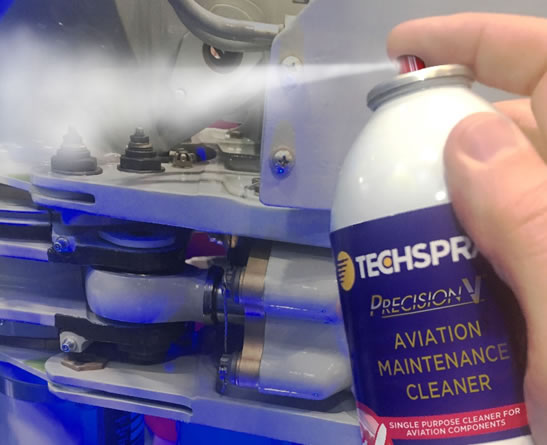
Techspray Aviation Degreasers
Techspray's Aviation MRO line breaks new ground in safety and performance for precision solvent cleaning, aircraft component degreasing, contact cleaning, and avionics repair.
Our R&D team works one-on-one with aircraft manufacturers and major aviation maintenance, overhaul, and repair facilities (MRO) to identify the root cause of their challenges and develop safer products that meet performance and compliance requirements.
PWR-4 Aviation Degreaser, G3 Blue Shower Maintenance Cleaner, and G3 Contact Cleaner are all approved under Boeing spec D6-17487 rev. P for paint softening, hydrogen embrittlement, stress crazing, and other aviation specific requirements. Aviation Degreaser II qualifies under NESHAP VOC requirements 63.741-753.
Whatever you fly, be it a Beech Bonanza or an Airbus 320, your landing gear takes a ton of abuse and is one of the most critical components on your airplane. Keeping it clean helps you identify defects easier and faster and is the best way to mitigate corrosion on the gear. Techspray products are designed with these areas in mind and eliminate caustic, dangerous hydraulic fluid as a cleaning agent. So take care of your landing gear, and it will take care of you!
For more information, contact your Techspray application specialist at 678-819-1408 or info@itwcce.com.
References
Boeing. “Managing Uneven Brake Temperatures on Twin-Aisle Airplanes during Short Flights.” https://www.boeing.com/commercial/aeromagazine/aero_17/brakes.pdf. Accessed February 2022.
Robins, Air Force. (2020) “Technical Manual: Cleaning and Corrosion Prevention and Control, Aerospace and Non-Aerospace Equipment.” To 1-1-691. https://www.robins.af.mil/Portals/59/documents/technicalorders/1-1-691.pdf?ver=2017-08-31-145004-663×tamp=1504205650382 Accessed February 2022.
U.S.D.O.T. F.A.A. (2018) “Aviation Maintenance Technician Handbook-General.” FAA-H-8083-30A. https://www.faa.gov/regulations_policies/handbooks_manuals/aviation/media/amt_general_handbook.pdf. Accessed February 2022.
U.S.D.O.T.F.A.A. (2018) “Advisory Circular: Corrosion Control for Aircraft.” https://www.faa.gov/documentLibrary/media/Advisory_Circular/AC_43-4B.pdf. Accessed February 2022.

